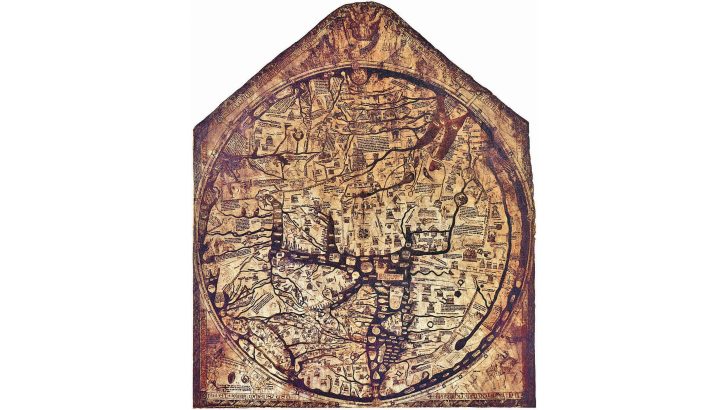For me Rosemary Power’s book provoked thoughts on a very different topic. There are insights of interest on every page of the author’s exposition. Yet there are comments one might question.
She describes the churches in the Middle East and North Africa as on the ‘fringe’ of Christendom. But this was surely not the case: early Christians saw Jerusalem as being the centre of their faith and indeed the centre of the world as they conceived it: Adamnán, the biographer of Colmcille, actually wrote a book, not about Rome, but about the Holy Places of Palestine.
New faith
The new faith had already broken the bounds of the Roman Empire, moving along the trade routes to Persia, Central Asia and India. A little later Nestorians would reach China, while some Christians followed the Jews of Diaspora across the Sahara to Black Africa. This is the Christian world as shown on the Hereford Mappa Mundi. In this view Ireland was certainly on the fringe not just of Christianity but of the known world. Jerusalem then was the centre not the fringe. But this is only a small point perhaps.
But the cities of the Middle East have a curious feature. In Middle Eastern cities, such as Jerusalem, Cairo, Istanbul, people can walk the same physical streets but live in different cities.
Edmund Wilson in his pioneering book The Dead Sea Scrolls (1955, revised ed. 1969) describes how the different world views of the different cultures there lead to the manuscripts being nearly lost sight of, because the Orthodox leader into whose hands the first came had closer connections in such matters with people in New York than his neighbours in Jerusalem. Edward W. Lane describes the same sort of situation among the various cultures of Cairo in his great book on that city in the 1830s, a century before.
The idea of ‘mental maps’ developed largely by geographers such as Hugh Brady and others has failed, to so speak, to find a home among Irish writers and commentators. If we paid more attention to the notion we would have fewer arguments.
We all say (or most of us do) “I live in Ireland”, but that Ireland is quite different from another person’s. Though it may appear highly objective science is in fact a very subjective application.
Maps
Take for instance the common appearance of maps. They are nearly always Mercator projections with north south orientations. Turn the page in your atlas around and see what a strange new appearance the world – or just Ulster – takes on. Maps should be arranged to reflect points of view, as H. J. Mackinder and other advanced geographers suggested as long ago as 1902.
How it appears thus to a class of people, such as whalers, is very different to how a statesman might see it. How each individual sees the world is very different from others.
To tell the truth, we none of us live in the same world as anyone else. We all live in a private world, largely of our own creating. That is how we like it. What others fail to recognise is their loss, perhaps even their failing. But what we have to accept is they see the world differently from us.
A saint’s view of the world is very different from that of the latest young man (it is always a young man) who shoots up a US school, supermarket or club, in a private war against society and culture.


 Peter Costello
Peter Costello Hereford Mappa Mundi.
Hereford Mappa Mundi. 